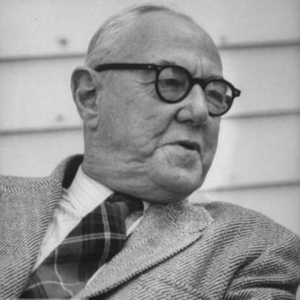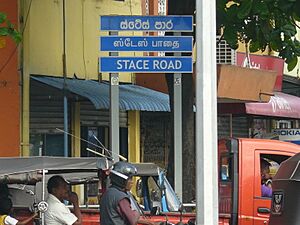Walter Terence Stace facts for kids
Quick facts for kids
Walter Terence Stace
|
|
|---|---|
 |
|
| Born | 17 November 1886 London, UK |
| Died | 2 August 1967 (aged 80) Laguna Beach, California, US |
| Occupation | Philosopher, academic, civil servant |
| Alma mater | Trinity College Dublin |
| Subject | Philosophy of mysticism |
| Notable works | Mysticism and Philosophy (1960) |
Walter Terence Stace (born November 17, 1886 – died August 2, 1967) was a British thinker. He was a civil servant, a teacher, and a public philosopher. He wrote about big ideas like Hegel's philosophy, mysticism, and moral relativism.
Stace worked for the government in Ceylon (now Sri Lanka) from 1910 to 1932. After that, he taught philosophy at Princeton University in the United States until 1955. He is best known for his work on the philosophy of mysticism. His books, Mysticism and Philosophy (1960) and Teachings of the Mystics (1960), are very important in this field.
Contents
Walter Stace: A Philosopher's Journey
Early Life and Education
Walter Terence Stace was born in Hampstead, London, England. His family had a long history of serving in the military. His father, Edward Vincent Stace, was a Major in the Royal Artillery. He also worked as a British Political Agent in British Somaliland. Walter's great-grandfather, William Stace, was a Chief Commissary during the famous Battle of Waterloo.
Even with his family's military background, Walter chose a different path. He wanted to study religion and philosophy. He went to Bath College and Fettes College in Scotland. Later, he studied at Trinity College Dublin in Ireland.
At first, Walter planned to become a priest in the Anglican Church. He had a strong religious experience when he was a teenager. But at Trinity College, he became very interested in the ideas of the philosopher G. W. F. Hegel. He graduated with a degree in philosophy in 1908.
Career as a Civil Servant and Professor
After college, Walter Stace joined the British Civil Service. From 1910 to 1932, he worked in the Ceylon Civil Service. Ceylon was part of the British Empire at that time. He held important jobs there, like District Judge and Mayor of Colombo. Colombo is the capital city of Ceylon. There's even a street named after him in Colombo called Stace Road.
While in Ceylon, Stace became interested in Hinduism and Buddhism. These religions greatly influenced his later studies of mysticism. He also wrote four philosophy books during this time.
In 1929, Stace earned a special degree called a LittD from Trinity College. He wrote a thesis called The Theory of Knowledge and Existence. This thesis was published as a book in 1932. His degree and books helped him start a new career.
In 1932, Stace retired from the Ceylon Civil Service. He then moved to the United States. He joined Princeton University as a philosophy lecturer. Later, he became a full professor. He retired from Princeton in 1955. He was also the president of the American Philosophical Association (Eastern Division) for a year.
Walter Stace was married twice. He passed away on August 2, 1967, in Laguna Beach, California.
Stace's Big Ideas
Stace's first four books were published while he worked in Ceylon. These included A Critical History of Greek Philosophy (1920) and The Philosophy of Hegel (1924). After these early works, his philosophy followed the British empiricist tradition. This means he believed that knowledge comes mostly from experience.
Stace is known as a pioneer in studying mysticism from a philosophical point of view. Many experts consider Mysticism and Philosophy (1960) to be his most important work. He also advised John Rawls, who became a very famous philosopher.
What is Phenomenalism?
In the 1930s and 40s, Stace's work was influenced by phenomenalism. This idea suggests that we only know things as they appear to us. It's about how our minds understand the world.
In his book The Theory of Knowledge and Existence (1932), Stace explored how our minds build beliefs about the outside world. He also wrote Refutation of Realism (1934). In this paper, he argued that we have no real reason to believe in a world completely separate from our minds.
Stace as a Public Thinker
In 1948, Stace wrote an important essay called Man Against Darkness. It was published in The Atlantic magazine. In this essay, he looked at how science changed people's views on religion. He felt that science made people question the idea of a divine purpose in the world. This led to a feeling that life might be meaningless.
Stace wrote:
Skepticism did not have to wait for the discoveries of Darwin and the geologists in the nineteenth century. It flooded the world immediately after the age of the rise of science.
Neither the Copernican hypothesis nor any of Newton's or Galileo's particular discoveries were the real causes. Religious faith might well have accommodated itself to the new astronomy. The real turning point between the medieval age of faith and the modern age of unfaith came when the scientists of the seventeenth century turned their backs upon what used to be called "final causes." ... If the scheme of things is purposeless and meaningless, then the life of man is purposeless and meaningless too. Everything is futile, all effort is in the end worthless. A man may, of course, still pursue disconnected ends, money, fame, art, science, and may gain pleasure from them. But his life is hollow at the center. Hence the dissatisfied, disillusioned, restless, spirit of modern man.
Stace believed that even if traditional religious reasons for morality faded, we could still find a strong basis for good behavior within human nature itself. He continued to share his ideas with the public. He gave lectures and wrote books for general readers, like Religion and the Modern Mind (1952).
Exploring Mysticism
Stace is very important in the philosophical study of mysticism. He helped define the main questions and offered ways to understand mystical experiences. He is seen as a key supporter of the perennial philosophy. This idea suggests that all religions and spiritual paths share a common core truth.
Stace's ideas about mysticism grew from his earlier work on how we gain knowledge. He believed that there is a "given" in our experience. This "given" is the basic, certain part of what we experience. It forms the foundation of all human knowledge.
Stace's 1952 Books
In 1952, Stace published three books about religion. They explored the tension between religious beliefs and scientific or naturalistic views.
- Religion and the Modern Mind looked at how the world changed from a religious view to a modern, scientific one. Stace discussed how religious truth is often expressed through symbols.
- The Gate of Silence was a poetic reflection on religion and naturalism.
- Time and Eternity was a defense of religion. Stace argued that religious ideas are symbolic. He also suggested there are two realms of being: time and eternity. These realms can exist together without contradicting each other.
Stace's 1960 Books
Stace's last two books on religion came out in 1960.
- The Teachings of the Mystics was written for a general audience. It presented a simpler version of his ideas from Mysticism and Philosophy. He used examples from different religions to show that mysticism is about finding a "nonsensuous unity in all things."
- Mysticism and Philosophy is considered his most important work. In it, Stace explained that he was writing as a philosopher, not a mystic. He said that mystical experiences themselves are different from how people interpret them.
Stace described two types of mystical experience:
- Extrovertive: The mystic sees unity in the many objects of the outside world.
- Introvertive: The mystic finds a pure, simple unity deep within their own mind.
He also discussed whether mystical experience is objective (real outside of us) or subjective (just in our minds). He concluded that mystical experience is "transsubjective." This means it goes beyond the usual ideas of subjective and objective.
Stace summarized his ideas on mysticism in two lectures in 1961. He said that studying mysticism needs us to look inward. He also listed qualities of mystical experience, based on an ancient text called the Mandukya Upanishad:
- A feeling of complete unity.
- The feeling of the self disappearing.
- A strong sense that the experience is real and true.
- Feelings of happiness and peace.
- A sense of calm.
- A change in the person's character, becoming more good and noble.
Stace believed that mystical experience is found in all cultures. This suggests it's a part of human nature.
Influence
Walter T. Stace's ideas about mystical experience have been very influential. His way of classifying these experiences formed the basis for a widely used scale. This scale, created by Ralph W. Hood, helps measure reports of mystical experiences.
Works
- A Critical History of Greek Philosophy (1920) Online text
- The Philosophy of Hegel: A systematic exposition (1924) Online text
- The Meaning of Beauty (1929)
- The Theory of Knowledge and Existence (1932)
- The Concept of Morals (1937)
- The Nature of the World. An Essay in Phenomenalist Metaphysics (1940)
- The Destiny of Western Man (1942)
- What are Our Values? (Lincoln, Neb.: University of Nebraska Press, 1950)
- Religion and the modern mind (1952)
- Time and Eternity (Princeton: University Press, 1952)
- Mysticism and Philosophy (1960) Full text online
- Teachings of the Mystics (1960)
- Man against darkness, and other essays (1967)
See also
- William James and The Varieties of Religious Experience
- Richard Maurice Bucke and Cosmic Consciousness
- Aldous Huxley and The Perennial Philosophy
- Nondualism


